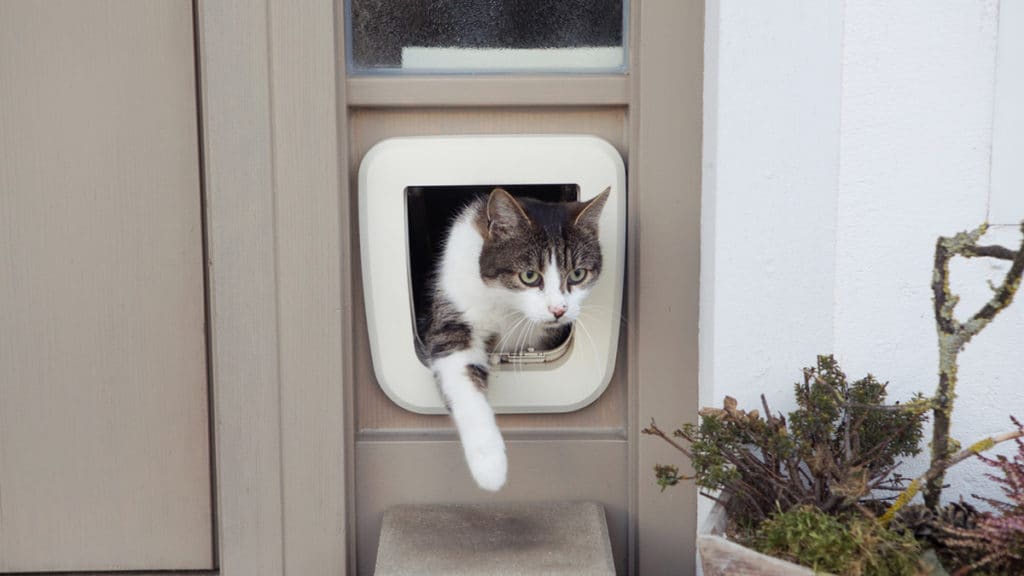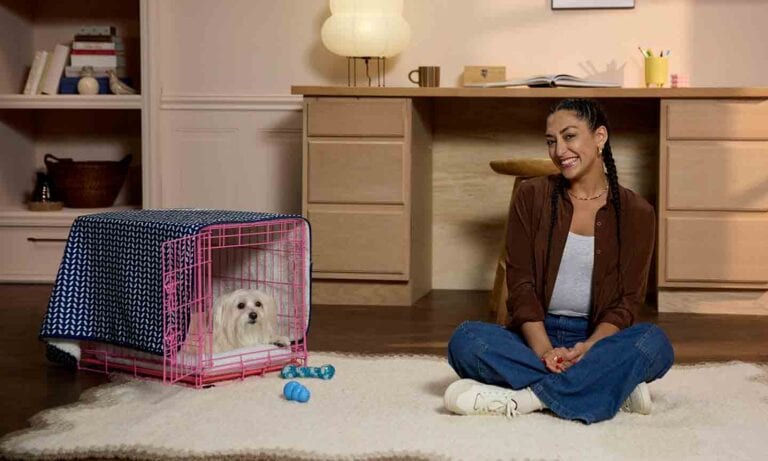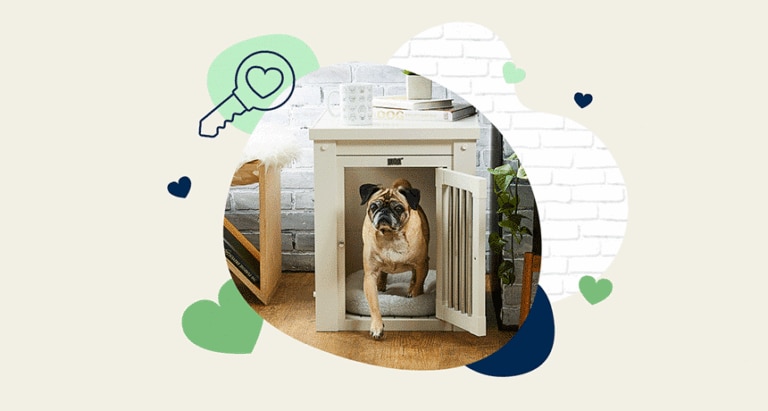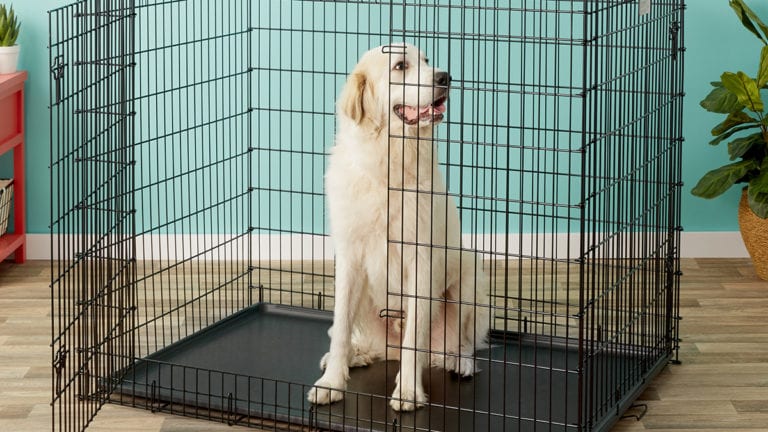It’s a far-too-common scenario for pet people: You are watching the final minutes of the season finale of your favorite TV show, and just at that critical moment—your dog paws your leg and whimpers as she dashes toward the back door. She pleads with you to usher her outside so she can potty… Now!
What’s the win-win solution for you and your dog? Consider installing pet doors, either in your back door, your sliding patio door and even between the studs in your wall. And let’s not overlook your indoor-outdoor cats, who can be trained to enter and exit a feline-sized cat door.
These days, pet doors come in many styles, materials and exciting features. Let’s take a closer look at some choices.
How to Choose the Right Pet Door
When getting a pet door, you must consider several factors.
- Size of your pet or pets. The pet door must be tall and wide enough for your biggest pet to enter and exit easily through.
- Yard features. For safety reasons, the pet door should open to a fenced backyard or other confined space, like a kennel run, and definitely not to an unsupervised swimming pool.
- Your willingness to train your pet to use the door. When introducing anything new to your pet, training is a must. Get tips on training your dog to use a pet door here.
- Location for the pet door. Will it be installed in a back door, a sliding patio door, a wall or another exit option? Your high-tech level of confidence. Some pet doors feature a special device on the pet’s collar that only lets that specific pet—and not any curious squirrel, neighborhood dog or other critter—in and out of your house.
- Weather. Depending on where you live, you need to pick the right pet door to protect against extreme hot or cold temperatures as well as rain or snow.
Pet Door Options
When I lived in Oceanside, California, I teamed up with my neighbor, Jan, to cut a hole in a wall that was big enough to accommodate Chipper, my 60-pound Husky-Golden retriever mix, Cleo, my 12-pound terrier mix, and my two indoor cats, Zeki and Murphy. We purposely cut the wall opening between the studs, so it easily could be repaired, closed and drywalled, if necessary.
We installed the correct-sized pet door that featured a waterproof seal and a sturdy flap for my Furry Fab Four to exit into an enclosed kennel run on the side of my house to do their “business” and to enjoy fresh outdoor breezes in a safe, confined area.
Whether you wish to go the DIY route or put a pet door panel in your sliding glass door track, there are many pet door options to choose from for you and your four-legged family.
1. Pet Doors with 2-Way Locking
These are your basic pet doors. They allow pets easy access in and out of the house, usually through a vinyl flap. The flaps may have a magnetic closure, like the one on Ideal Pet Products’ Designer Series pet door, to ensure the flap stays sealed after use.
These pet doors come with a panel you can slide in to completely lock the pet door so no pets (or wild animals) can get in or out. Or some, like PetSafe’s 2-way locking cat door, has a lock incorporated into the design of the door and all you need to do is slide it closed. For indoor use only, PetSafe’s 2-way locking cat door is designed to effectively thwart your dog from accessing a specific area—for example, your cat’s litter box in the spare bedroom.
2. Pet Doors with Multiple Lock Options
If you want more locking options than open or close, consider a pet door with 4-way locking. A four-way locking door, like PetSafe’s 4-way locking cat door or Cat Mate’s 4-way self-lining door, can be set to completely open, completely locked, only allow pets to enter or only allow them to exit.
3. Pet Doors for Selective Entry
If you want even more locking options, then consider a door that only opens for a specific coordinating pet ID tag or pet microchip. This high-tech feature is designed to keep out roaming neighborhood dogs or cats as well as wildlife, such as coyotes or raccoons.
Cat Mate’s Elite Microchip pet door, for example, is operated by your cat’s unique microchip or I.D. Disc (sold separately). You can choose between locked, unlocked, in-only and out-only, and the timer function controls your cat’s access to the flap, so you can keep her inside at night.
If you happen to have a large dog and large pet door, this type of technology may help prevent an intruder from scooting through and into your home.
4. Pet Doors for Sliding Doors
Most pet doors are installed by cutting out a piece of your door. That’s not exactly an option with sliding glass doors. But rest assured, there are still options for those types of doors.
PetSafe’s Freedom Patio pet door and its Sliding Glass pet door are designed to fit easily into an existing door track and offers a convenient way to let pets out without having to cut into a wall to install a pet door.
Another benefit for renters is that it can be removed easily without causing any permanent changes to the leased dwelling.
5. Pet Doors for Walls
If you prefer a no-door option, then consider a wall entry pet door. Petsafe’s Wall Entry pet door, for example, is designed to be installed in almost any wall. It offers a double-flap system for enhanced energy efficiency and comes in several sizes.
6. Pet Doors for Extreme Weather
If you live in an area prone to heatwaves or blizzards, you might want to consider a door specifically designed to withstand extreme weather. The PetSafe Extreme Weather Pet Door has not one, not two, but three flaps to keep the heat or cold weather outside while giving your pet the freedom to come and go.
Pet Door Training Tips
The key to successfully training your dog or cat to go in and out of the chosen pet door starts with “P” for patience—your patience. Pets are adept at reading and reacting to our emotional states, so make the pet door training fun for both of you. Plenty of healthy treats as enticements certainly will help.
Here are some other tips from Nick Frank, product manager for PetSafe Pet Doors:
- Lift or tape the door flap open to help your pet become familiar with the pet door opening.
- Encourage, but never force, your pet to come through the pet door to avoid causing your dog or cat to become frightened.
- Use treats to motivate your pet to use the door. First, feed your pet a treat or two near the pet door from inside your home. Once she is comfortable approaching the pet door, team up with a family member or friend. You stay inside next to the pet door while your friend positions himself outside by the pet door. Take turns having your pet go through the raised flap to garner the awaiting treat.
- Gently lower the flap on the pet as he exits and enters to get him accustomed to the feel on his back. Be encouraging and heap on praise and treats for each successful enter-exit.
- Once your pet gets the idea of going through the pet door, lower the flap and encourage him to push through the flag on his own.
“Most pets will learn to use the pet door with a few short training sessions,” Frank says. “The most important rule is to be patient with your pet and let him work out for himself that he can go through the pet door. He will be letting himself in and out in no time.”
By: Arden Moore
Featured Image: Via iStock.com/w-ings
Share:


















